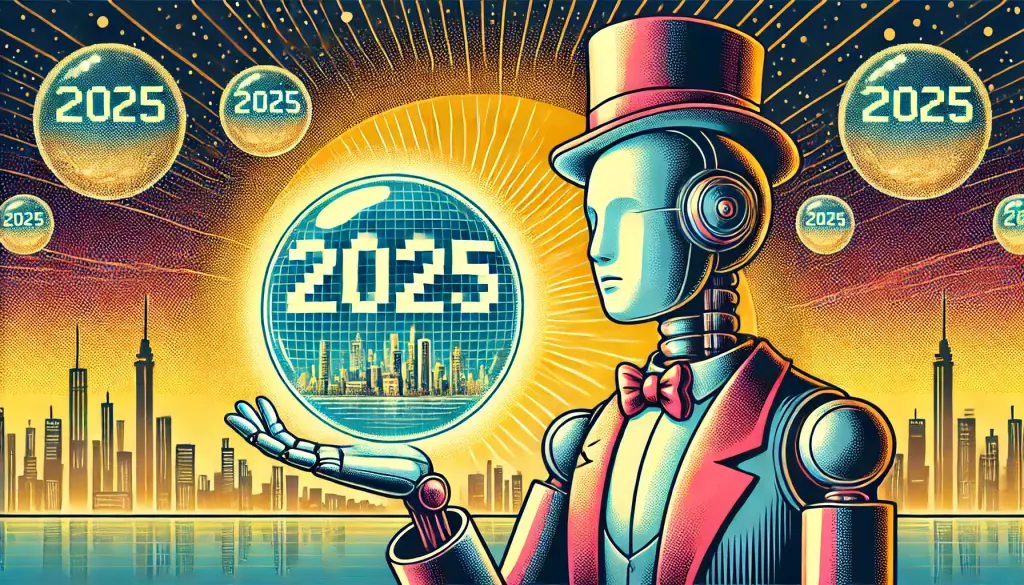Artificial Intelligence (AI) has cemented its place at the forefront of technological innovation, particularly in 2024, a year marked by significant advancements and widespread commercialization. As late 2023 heralded the arrival of generative AI, particularly through OpenAI’s ChatGPT, the momentum did not wane; instead, it transformed into a robust wave of new developments, emerging technologies, and more refined applications across various sectors. Here’s a thorough examination of this dynamic landscape and its implications.
Explosion of Large Language Models
The proliferation of large language models (LLMs) has been a predominant feature of 2024’s AI landscape. OpenAI played a pivotal role in sustaining the momentum with the introduction of advanced models like the o1 reasoning series and the anticipated o3 model. These models are engineered to handle complex prompts with enhanced precision, particularly in demanding fields such as scientific research, software development, and logical reasoning. The introduction of such refined AI products not only enhances the capabilities of AI but also raises the bar for competing entities in the tech industry.
Simultaneously, other tech giants have also made notable strides in LLM technology. Meta’s release of the Llama 3 series exemplifies this, pushing open-source AI performance boundaries while rapidly integrating these advancements into its suite of communication platforms. Similarly, Chinese tech firms stepped up, with Alibaba and DeepSeek launching competitive models that have impressed on various benchmarking tests. This environment of innovation signifies not merely an increase in AI capabilities but also underscores an intensifying competition to capture market share in an ever-evolving landscape.
The shift towards “agentic” AI—systems capable of functioning independently without minimal human interaction—marked a vital development in 2024. This new breed of AI agents has come to the forefront, especially with notable contributions from major enterprise software vendors. Salesforce’s Agentforce 2.0 and SAP’s Joule turned chatbots into advanced AI agents, thus revolutionizing standard practices in customer relationship management and enterprise function. By integrating sophisticated reasoning with real-time operational capabilities, these advancements promise enhanced productivity across industries.
Moreover, Google’s Project Astra showcases the synthesis of numerous services into a cohesive AI assistant capable of delivering contextual responses dynamically, illustrating how enterprise-level AI solutions will become integral to decision-making processes in real-time. This trend signifies a potential shift in how organizations operate, moving towards automated systems that liberate human resources from mundane tasks, allowing for more creative and strategic pursuits.
As AI continues to evolve, its application extends beyond the realms of language processing and enterprise solutions, delving into sophisticated domains such as video generation and multimodal capabilities. OpenAI’s Sora video generator received a robust response upon its launch, employing unique interface designs to differentiate itself amid fierce competition. Furthermore, innovations like Google’s Gemini 2.0 Flash leverage multimodal capacities, allowing for real-time, interactive capabilities that enhance user experience across multiple platforms. These emergent applications illustrate the shift towards more integrated forms of AI that enhance user interactivity and provide tailored solutions.
The increasing relevance of AI-generated content across various domains cannot be overstated. As companies from OpenAI to Microsoft and Apple embed advanced AI content generators into their offerings, the landscape is set to witness a metamorphosis in content creation processes. This transformation facilitates not just efficiency in production but also personalization, making it a critical player in shaping user experience in both business and consumer realms.
The Road Ahead: 2025 and Beyond
Looking forward to 2025, the implications of 2024’s advancements lay the groundwork for more extensive integration of AI technologies in everyday life. The anticipated large-scale deployment of both LLMs and generative AI-powered robotics is set to revolutionize sectors such as manufacturing, logistics, and consumer services, enhancing automation potential and redefining human-robot interactions.
Moreover, as enterprises increasingly adopt these technologies, we can expect an acceleration in innovation, spurring new business models and operational frameworks. This evolution captures a pivotal moment in AI history—a juncture where technological capabilities are not just augmenting human effort but transforming industry standards and consumer expectations.
The technological advancements of 2024 signal a thrilling era for artificial intelligence, as companies race to harness its potential. As we navigate these rapid changes, it is critical to critically assess both the opportunities and challenges that lie ahead in this ever-advancing field. Exciting prospects await, and the developments of this year will undoubtedly shape the trajectory of AI well into the future.


Leave a Reply